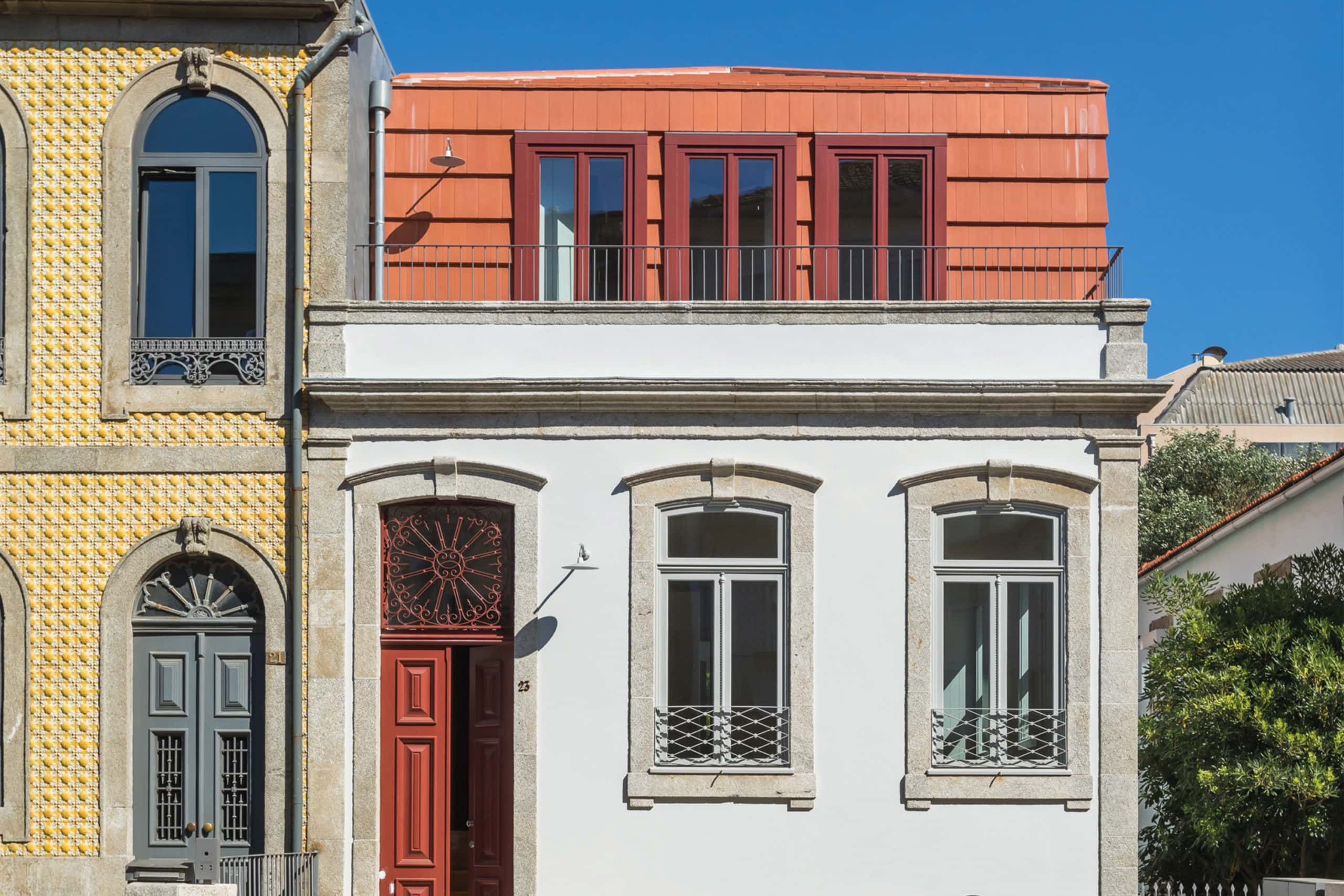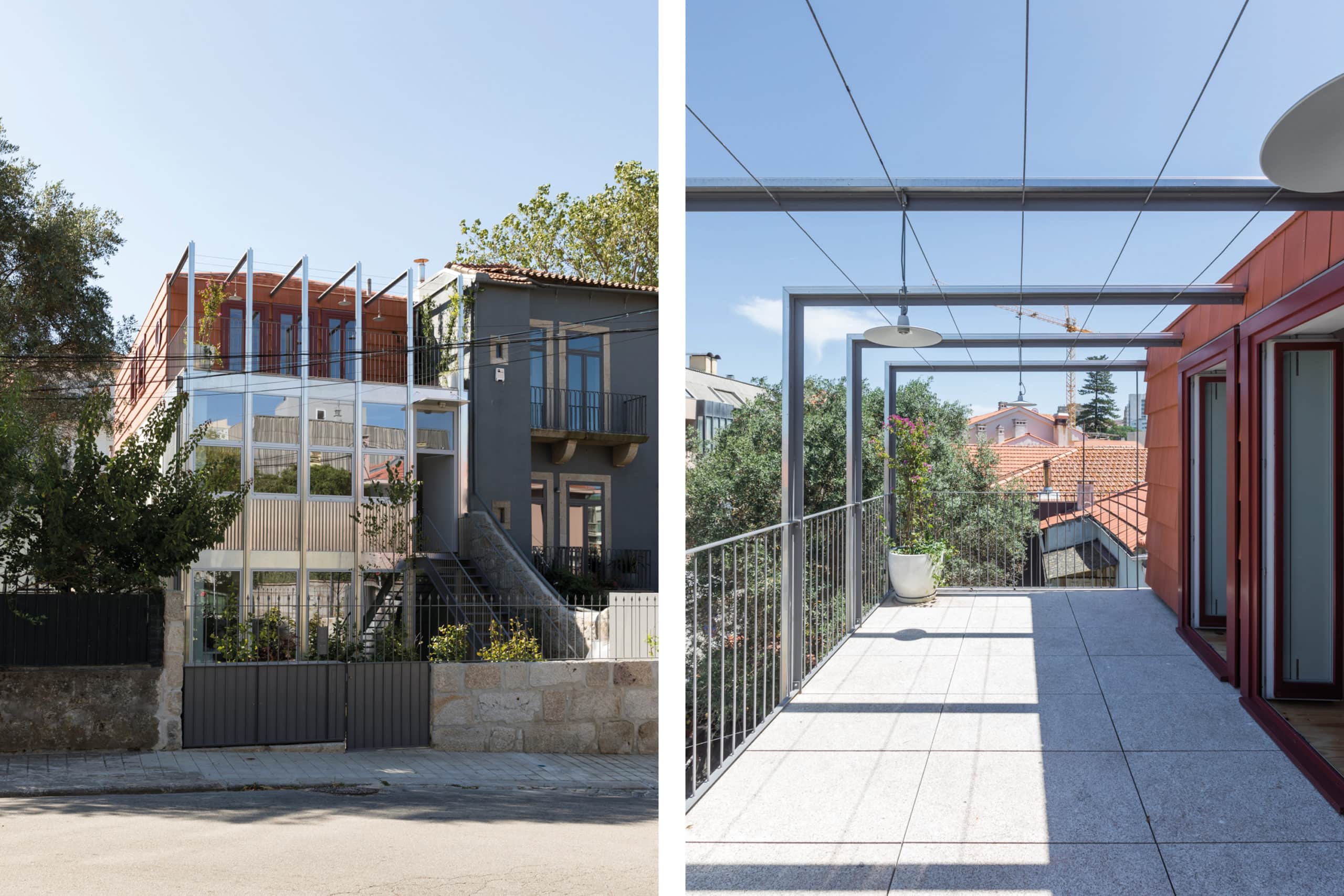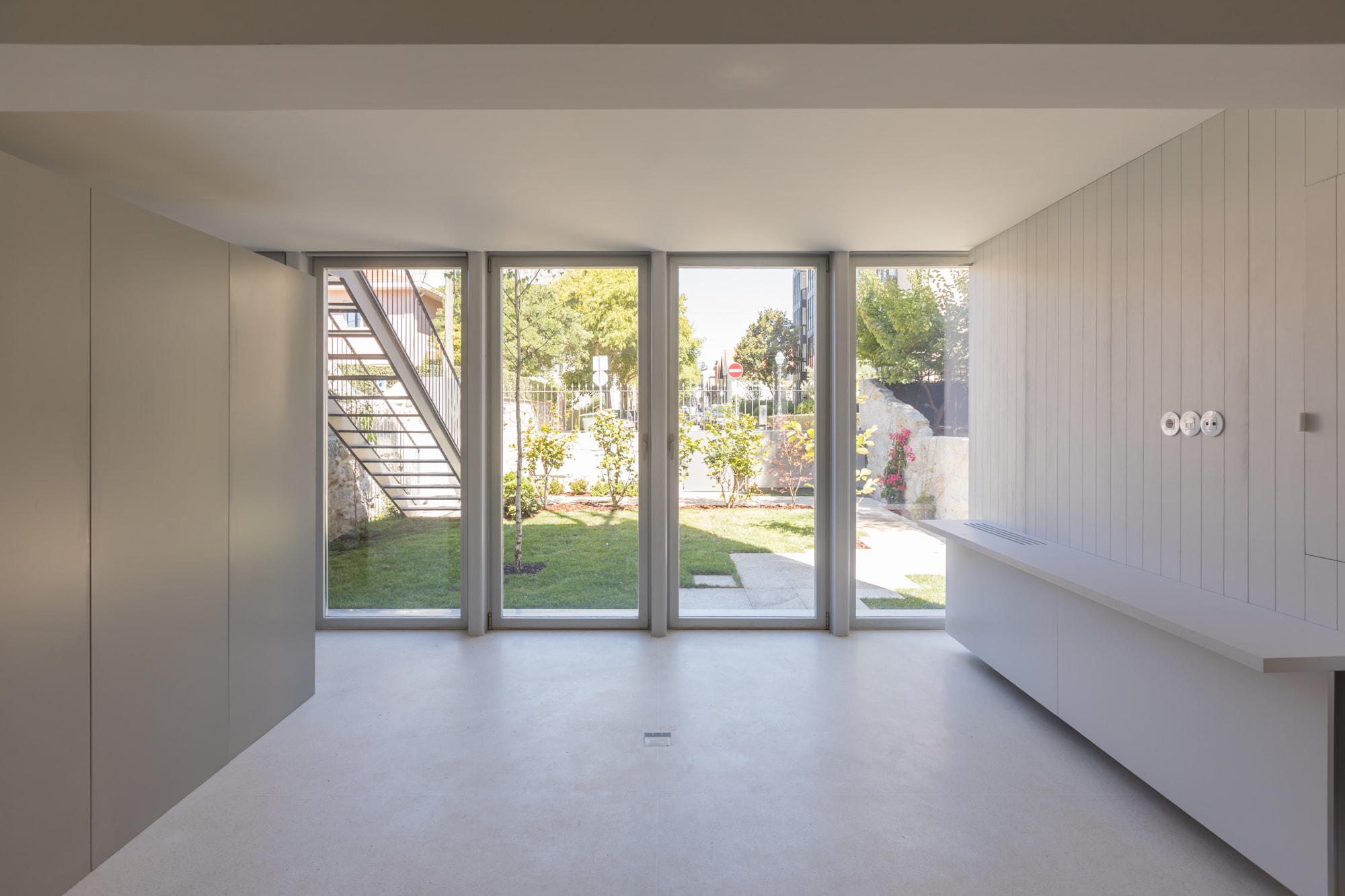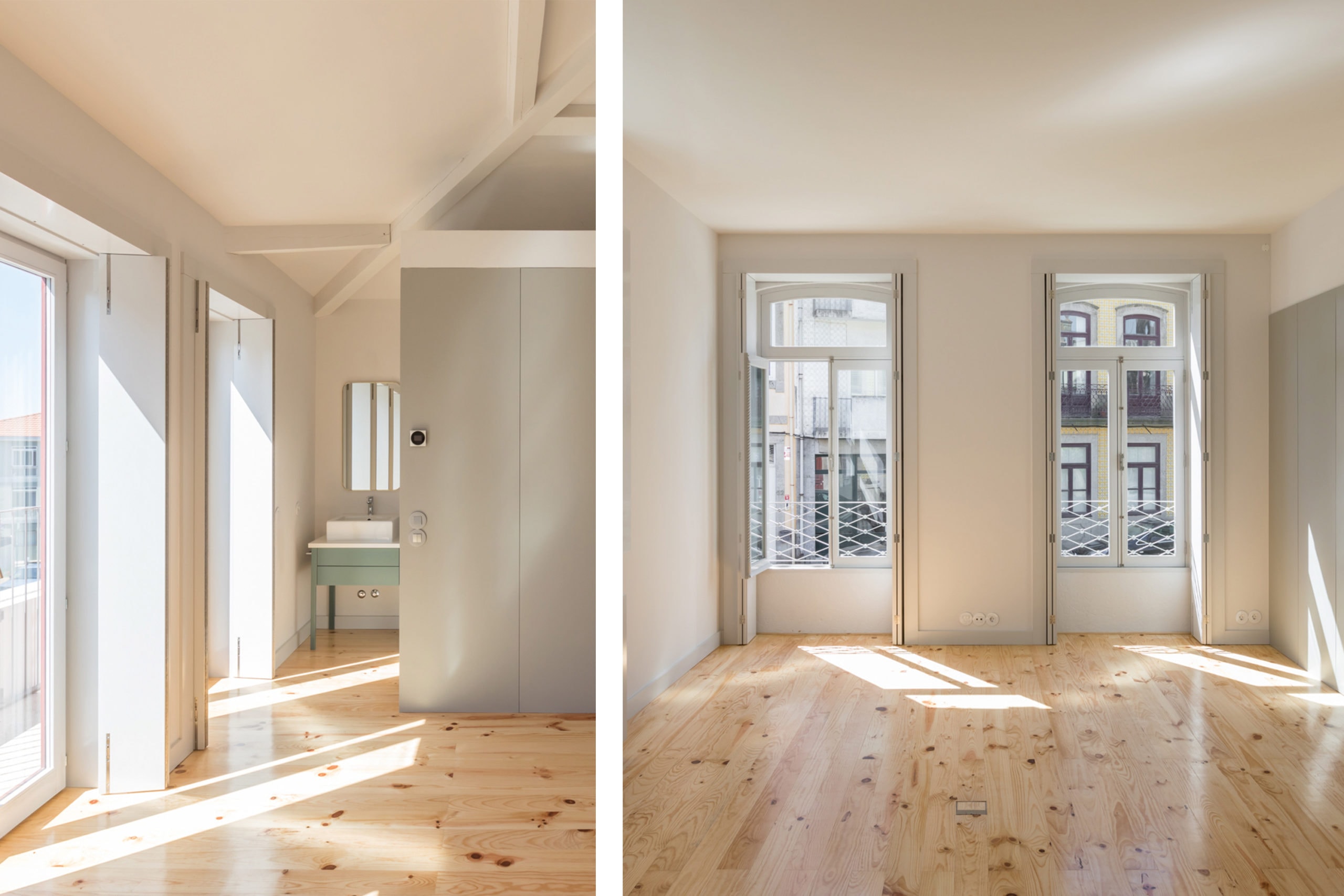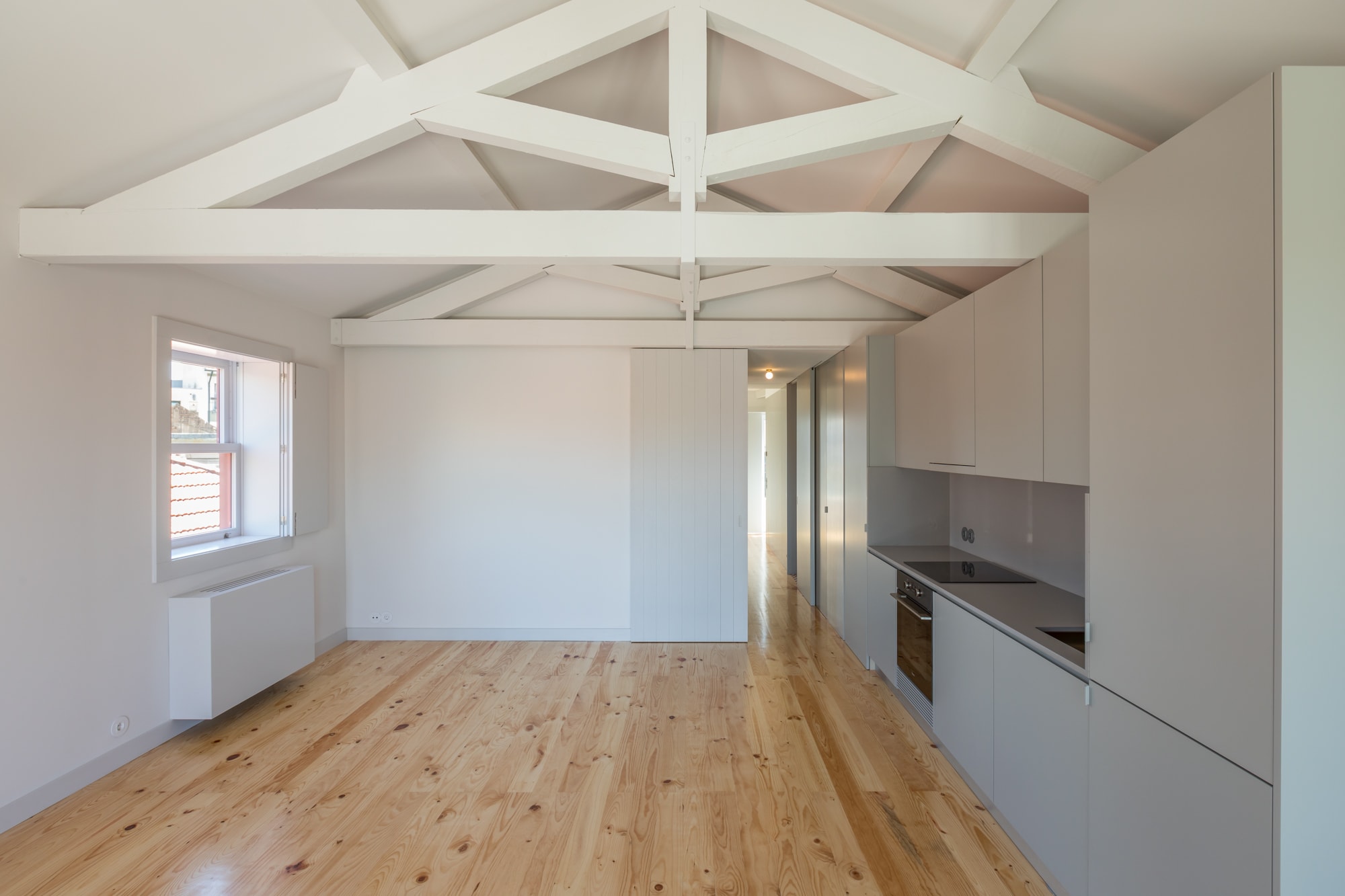The project proposed the extension and rehabilitation of the building, which was uninhabited at the time, maintaining the residential use and organising the space into five units – two on the ground floor, two on the middle floor and one on the upper floor. The existing outbuildings and garage were demolished to restore the patio as a garden.
The rehabilitation intervention sought to preserve the constructive and morphological characteristics of the existing housing. The main building and its original surrounding walls were kept in granite masonry, adapting the interior, which was quite adulterated.
The project proposes to enlarge this building at the back, with a light, glazed structure, as traditional in 19th/early 20th century Porto, following the alignment of the adjacent building and the proportion of traditional façade openings.
The new volume of the four-water roof, in turn, was proposed to be set back from the façade plans in order to distinguish it from them, and its cladding in ceramic tiles, as happens repeatedly in our city on set-back floors and gables, although, both because of the type of tile, flat, and the clean design of the frames, it was also intended to affirm the time of construction.
The permeability and urban relation was reinforced by the iron railing associated with vegetation, helping to filter and guarantee privacy, and at the same time benefiting the surroundings from a landscape point of view. As for the front patio (Rua do Monsenhor Manuel Marinho), the existing pavement in granite slabs was kept.
A cupboard runs longitudinally along the inside of the building and organises various functions by distinguishing service and circulation areas from living/sleeping areas, and concentrating the passage ofinfrastructure.
The division of the units was designed to be adjustable, as needed, so that by means of connecting doors, the two one-bedroom units can be combined into one two-bedroom unit on the ground floor, and the one-bedroom unit and the one-bedroom unit on the middle floor.
